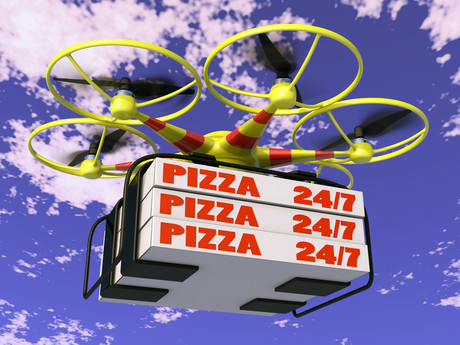The rise of restaurants without seats and seats without restaurants

Every year Baum + Whiteman releases its annual hospitality predictions. This company really knows the restaurant and hotel dining business having created many high-profile restaurants around the world. It has just released its predictions for next year: ‘13 Hottest food & beverage trends in restaurant & hotel dining for 2017’, which is a very entertaining read.
Of special relevance to the ready meals/prepared food industry is its second prediction: Restaurants without seats; seats without restaurants.
“In 2015 we highlighted the ‘uberization’ of food delivery ... with Amazon, Google, Uber, Postmates, etc. all scratching for a place at your dinner table. For 2017 we’re spotlighting ‘Virtual Restaurants’ ... a different way our sharing economy is upending traditional restaurant thinking ... allowing American couch potatoes to wallow in mass personalisation without concern for the weather.
Indie startups and even chain restaurants are creating ‘delivery hubs’ ... commercial kitchens in offbeat, low-rent locations staffed by professional cooks. With no seats, their sole purpose is efficient meal delivery to people’s homes. They are low-investment restaurants without dining rooms ... and you find companies as diverse at Panera Bread (which thinks there’s a billion dollars just in catering) ... Momofuko’s David Chang with two delivery-only brands in New York, Maple and Ando ... Munchery, delivering ready-to-heat meals from central kitchens in San Francisco, Los Angeles, Seattle and New York and with a corporate program for office workers hunched over their computers ... and spaghetti maven Michael White is teaming with UberEats for a delivery-only brand called Pasta on Demand. Green Summit in NYC has phantom restaurants ... an online-only stable of eight bogus brands with specialty menus, each with its own website, and two kitchens feeding Manhattan and part of Brooklyn.
Meanwhile e-startups around the country are assembling networks of home cooks to prepare meals and deliver them to other people’s dining rooms. So here we have seats without restaurants ... home cooks post their menus and customers use various apps to search, order and pay, after which food is delivered or picked up. Among them ... Yuma in Montreal ... and Umi Kitchen with Danny Meyer’s daughter and Danny as an angel. They’re not alone: ChefKiss is signing on local chefs in Tempe and Scottsdale ... Trybe is a London delivery platform for home cooks to prepare meals for hungry locals in their area ... Foodieshares has been doing it in LA. Most flirt with legal prohibitions about selling food from home kitchens but none is large enough to bother local health departments ... yet.
Another group of startups took note when AirBNB began taking reservations for dinners in home cooks’ dining rooms ... a corporatization of an earlier underground restaurant trend ... and began launching similar apps connecting adventurous eaters with “boarding house” dinners and pop-up feasts in secret locations. There’s VizEat in Italy, France, Spain, UK and Portugal ... aimed at visitors to a city who’d rather not fall into standard tourist traps. And Feastly in Los Angeles and San Francisco.
Meal kits represent a growing (albeit still small) example of restaurants-without-seats business. Blue Apron, Hello Fresh, Plated, Chef’d and purely local outfits ... plus online grocers and even some restaurants ... plus consumer brands like Campbell’s ...think there’s a bonanza in ready-to-prep meals-in-a-box at prices that rival costs for eating out.
Don’t forget drones. Lots of experimenting going on ... including Google-Chipotle at Virginia tech ... Domino’s pizza drone in New Zealand ... 7-Eleven slurpees and sandwiches in Reno ... Amazon and the UK testing the feasibility of drone delivery.
A couple-of-billion venture capital dollars have flowed into food delivery businesses ... even as the field gets crowded and failures multiply. Eventually there’ll be consolidation ... or, more importantly, they’ll be gobbled up my big-gorilla tech companies and integrated into reservations apps ... also a field getting overcrowded.”
The rise of the virtual restaurant parallels the rise of the ready meal — so it looks as if 2017 will be great for this section of the food industry.
Career upskilling: from food to product development chef
Former chef Zach Baudinet decided to take his years of food experience to the next level through...
A taste of flavours on trend in 2024
Understanding the flavours, ingredients and trends that will shape what we consume is essential...
What's new on the shelf this Easter?
Paper artwork-inspired chocolate eggs, sweet chilli products on show and bite-sized Polly Waffles...












